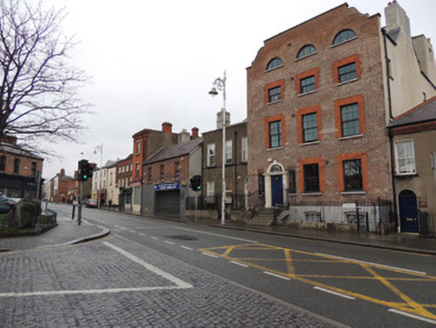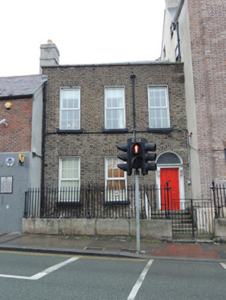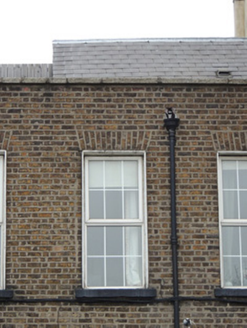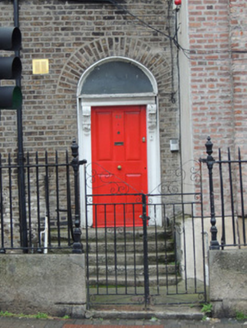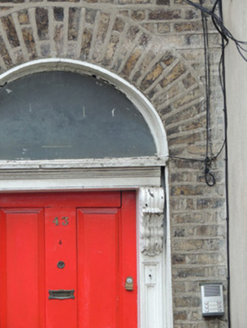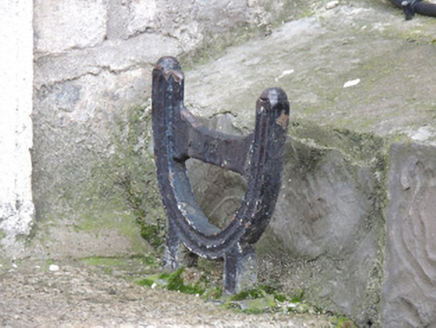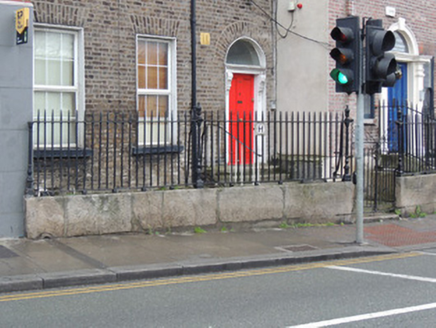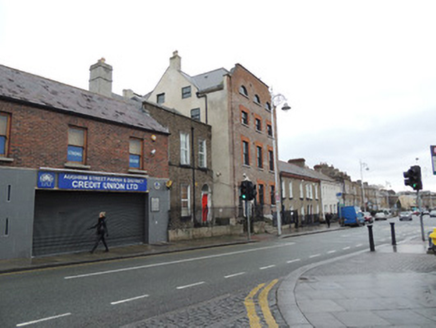Survey Data
Reg No
50070076
Rating
Regional
Categories of Special Interest
Architectural, Artistic
Original Use
House
In Use As
Apartment/flat (converted)
Date
1780 - 1820
Coordinates
314223, 235046
Date Recorded
02/01/2013
Date Updated
--/--/--
Description
Attached three-bay two-storey former house, built c.1800, now in use as apartments, having recent refurbishment and two-storey extension to rear (north-east) elevation. Recent mansard artificial slate roof, roof garden to north. Recent rendered chimneystack on party wall with no.44 to north-west. Brown brick walls laid in Flemish bond to front (south-west) elevation, with granite coping to parapet, and cast-iron rainwater goods. Square-headed window openings, having brown brick voussoirs, rendered reveals, painted sills and replacement uPVC windows throughout. Round-headed door opening with brick voussoirs, plain fanlight and replacement timber panelled door flanked by engaged pilasters with carved consoles. Granite platform and steps. Cut granite plinth wall to front boundary with wrought-iron railings and cast-iron corner posts enclosing garden.
Appraisal
This well-composed building maintains the parapet height and fenestration arrangement of nearby buildings on Manor Street, which is mainly dominated by nineteenth century two-storey houses. The large windows to the upper floor are probably the result of late nineteenth-century refurbishment. Although the house has since been converted to apartments, the facade retains much of its early form and character. Thom’s directory of 1846 lists no.43 as no.45, as being vacant, while the Dublin Street Directory of 1862 lists Mr. Patrick O’Keefe as living here. In 1877, John Hawe, superintendent of the metropolitan police is listed as being resident at no.43, reflecting the use of no.42 as the Police Station D Division.
